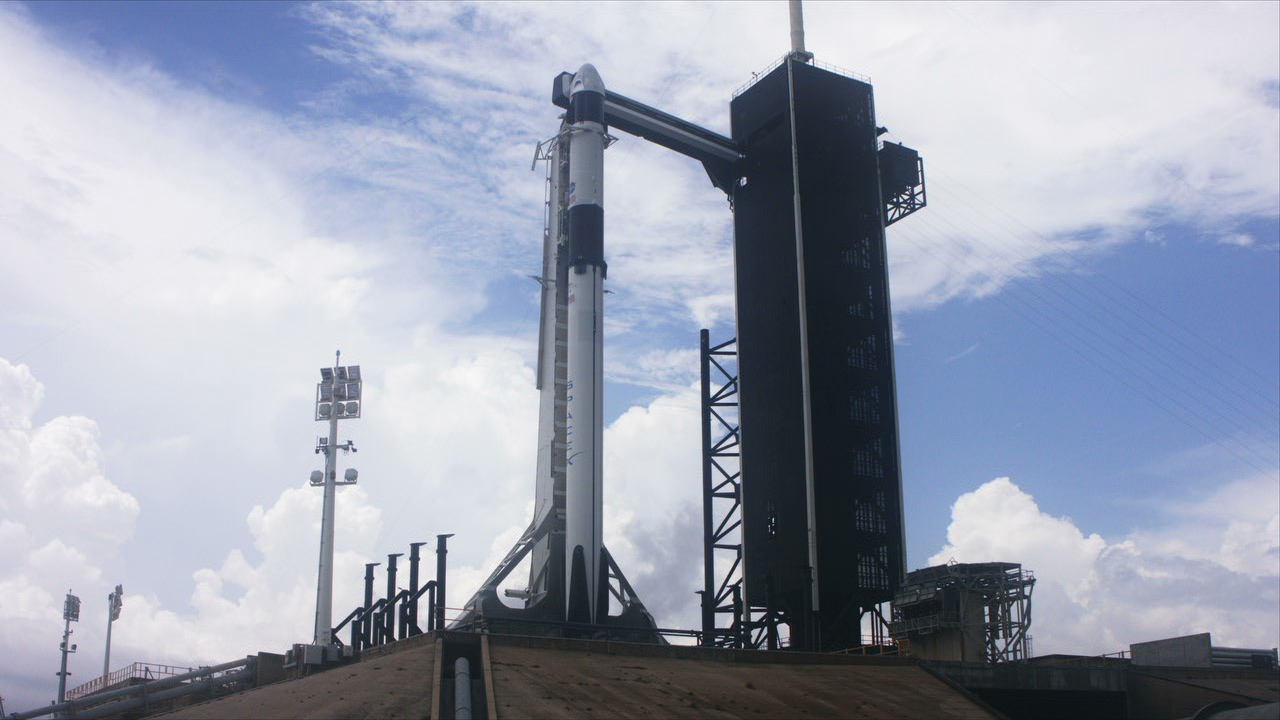Why do rockets launch from Florida?

Nearly 70 years ago, Florida's "Space Coast" was born with the launch of a rocket called Bumper 8 on July 24, 1950, from what was then called Long Range Proving Ground Base in Cape Canaveral, Florida.
SpaceX has teamed up with NASA and is expected to make a historic launch Saturday (May 30) from Launch Pad 39A at the Kennedy Space Center on Cape Canaveral, sending astronauts to the International Space Station from U.S. soil for the first time since the Space Shuttle program ended in 2011.
Cape Canaveral, which sits between Jacksonville to the north and Miami to the south, hosts two launch sites: Kennedy Space Center, on Merritt Island; and Cape Canaveral Air Force Station, on the cape. The Cape has become America's gateway to the cosmos, but it wasn't the first place from which rockets were launched in the United States.
Related: How to watch the historic SpaceX astronaut launch online
After World War II, when military rocket technology was in its infancy, rockets were launched from White Sands Test Facility in New Mexico. But the technology was, literally, outgrowing the test range there.
"The total length of range at White Sands was about 100 miles," said Stan Starr, chief of the Applied Physics Branch at Kennedy Space Center. "Everything they launched had to go straight up, and slightly to the north so the radar and telemetry stations would be able to see the rockets to track them."
At the time, several military programs had the goal of reaching great distances. But in order to reach that goal, such programs needed the ability to track the rocket throughout the range, Starr said. Should something go wrong, rocket engineers also wanted to be sure that rockets would land benignly, preferably in an ocean.
Get the world’s most fascinating discoveries delivered straight to your inbox.
"The Cape had a big advantage," over other locations, Starr said. It was selected for two reasons: the fact that it is relatively near to the equator compared with other U.S. locations; and the fact that it is on the East Coast.
An East Coast location was desirable because any rockets leaving Earth's surface and traveling eastward get a boost from the Earth's west-to-east spin. A West Coast location would either send rockets over populated areas or have to contend with launching against the direction of the spin.
"Any object on the Earth's surface is already moving east very fast," Starr said.
And, the rate of spin is at its highest on the equator and slowest at the poles, so the Cape's southern location also gave it a boost, Starr said. Cape Canaveral is about 28 degrees latitude above the equator.
Here's why: Picture a record spinning on a turntable and a small weight placed near the center and also near the edge, NASA explains. The distance from the center of rotation affects how much of a boost in so-called tangential velocity for each weight. So the weight on the outside edge has a larger distance and therefore a larger tangential velocity than the center weight, according to NASA. Earth can be thought of as a three-dimensional record, the farthest point from the central point around which the planet spins would be at the equator, NASA said.
Since Cape Canaveral is about 28.5 degrees above the equator, the boost a rocket gets there is a little less than Earth's spin rate exactly on the equator. That boost ends up being about 914 mph (1,471 km/h), according to NASA. The SpaceX Crew Dragon spacecraft, launched by a Falcon 9 rocket, needs to reach about 17,000 mph (27,000 km/h) when it enters Earth's atmosphere, Space.com reported.
The Bumper rockets that were tested in 1950 were the first two-stage rockets to be developed, Starr said. Two-stage rockets involve one rocket that launches from the ground, and a second rocket that launches from the first in flight, during a separation.
There were eight Bumper rockets in total, and the first six were launched from White Sands. But Bumper 5 soared to an altitude of 244 miles, which is higher than the International Space Station orbiting the Earth today, and heightened the need to find a larger launching range, Starr said.
The Air Force installation on Cape Canaveral was renamed Patrick Air Force Base on Aug. 1, 1950.
Today, the Base is adjacent to the Kennedy Space Center, and in the years since the Bumper rockets, Cape Canaveral has hosted thousands of rocket launches.
Editor's note: This article was first written in 2010 and updated in 2020.

